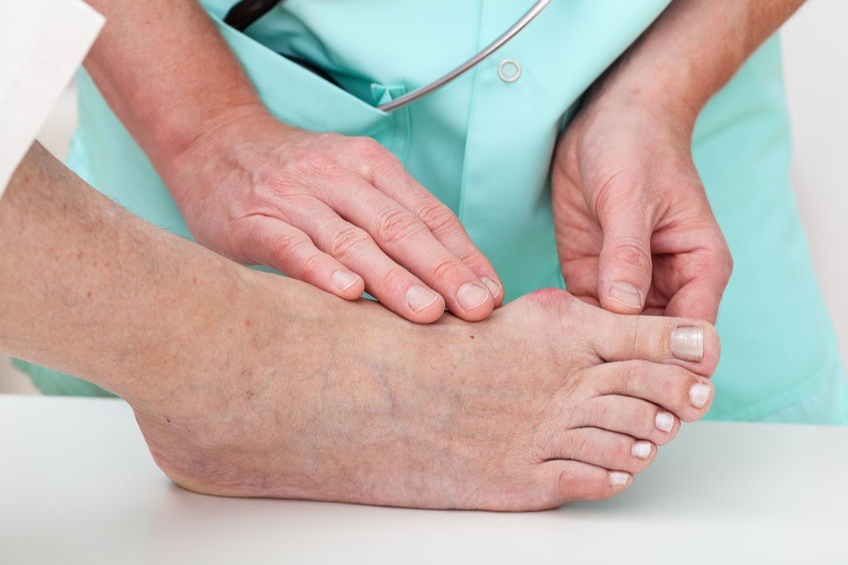All You Need to Know About Bunion – Causes, Symptoms & Treatments
If you’ve noticed a presence of a bulky tissue or bony bump on the side of your feet near the big toe, then it is quite likely that you are dealing with a bunion. These are painful and often inflamed joint deformities that can make even walking difficult. Understanding what causes them, their symptoms and ways to prevent them is essential for anyone looking to keep their feet healthy. In this blog post, we will be offering readers an in-depth look at these issues so they can take better care of themselves!
What Are Bunions and What Causes Them
Bunions are a common foot deformity that affects many individuals across all ages. They are bony bumps that develop at the base of the big toe and cause significant pain and discomfort. The primary cause of bunions is due to the misalignment of the foot bones, which leads to pressure points, inflammation, and eventually, joint deformity. Other contributing factors include genetics, wearing tight, narrow shoes, and arthritis. Although they can be hereditary, bunions are preventable and manageable with proper care and treatment. Seeking professional help from a podiatrist can help prevent bunions from becoming worse and improve overall foot health.
Symptoms of a Bunion
Bunions are a common foot condition that can cause a significant amount of discomfort. The symptoms can be quite noticeable and include a bump on the joint at the base of the big toe, pain or soreness in the affected area, redness and swelling, and difficulty moving the toe. Other symptoms may include calluses or corns on the foot, as well as a shift in the alignment of the toes. If left untreated, a bunion can worsen over time and lead to additional complications. Seeking proper medical attention is essential for anyone experiencing symptoms of a bunion. Professionals can provide customized treatment options to help alleviate the discomfort and prevent further development of the condition.

Bunion Treatment
Diagnosis of a Bunion
A bunion is a common condition that affects many people, and while it is not usually serious, it can cause discomfort and affect quality of life. Diagnosis of a bunion is typically straightforward and can usually be made by a medical professional after a physical examination. X-rays may also be used to confirm the diagnosis and to determine the severity of the condition. While treatment options vary depending on the severity of the bunion, early diagnosis is key to preventing further damage and managing symptoms effectively. If you suspect you may have a bunion, it is important to seek medical attention to obtain an accurate diagnosis and to discuss the appropriate treatment options with your healthcare provider.
Treatment Options for Bunions
Bunions can be a painful and uncomfortable condition that affect many individuals. Fortunately, there are a range of treatment options available to help alleviate the pain and restore comfort. Depending on the severity of the bunion, treatment options can range from conservative measures such as changing footwear or using orthotics to more aggressive options such as surgery. It is important to consult with a medical professional to determine the best course of action for each individual case. Seeking treatment for a bunion can not only provide relief from discomfort but also prevent further complications down the line. A professional and experienced foot healthcare provider can offer guidance and expertise to help find the most effective treatment plan for each individual’s unique needs.
Non-Surgical Treatments for Bunions
Bunions may not always require surgery for treatment. There are non-surgical treatments available for people who suffer from this common foot condition. One of the most effective treatments includes wearing shoes that fit properly in order to reduce pressure on the toes. Another option is wearing custom orthotic inserts, which provide support to the foot and reduce the pain associated with bunions. Physical therapy and foot exercises can also be beneficial in reducing pain and preventing the worsening of the condition. In severe cases, surgery may be necessary, but non-surgical treatments are often the first line of defense for treating bunions. It’s important to speak with a medical professional to determine the best course of treatment for individual cases.
Bunions are a common issue among many individuals and can result in a great amount of discomfort if they go untreated. Although there is no one-size-fits-all solution to the bunion problem, the variety of treatment options available offer hope for those seeking relief from their bunion. All treatments should be discussed with your physician or healthcare provider so that you understand the risks and benefits associated with each option. Remember, taking care of yourself now may help stop more severe health issues down the road!

Bunions Treatment Services
Flagstaff Foot Doctors: Anthony Rosales DPM
https://www.google.com/maps?cid=8835841318590452161
421 N Humphreys St, Flagstaff, AZ 86001, United States
(928) 774-4825
https://flagstafffootandankle.com/
